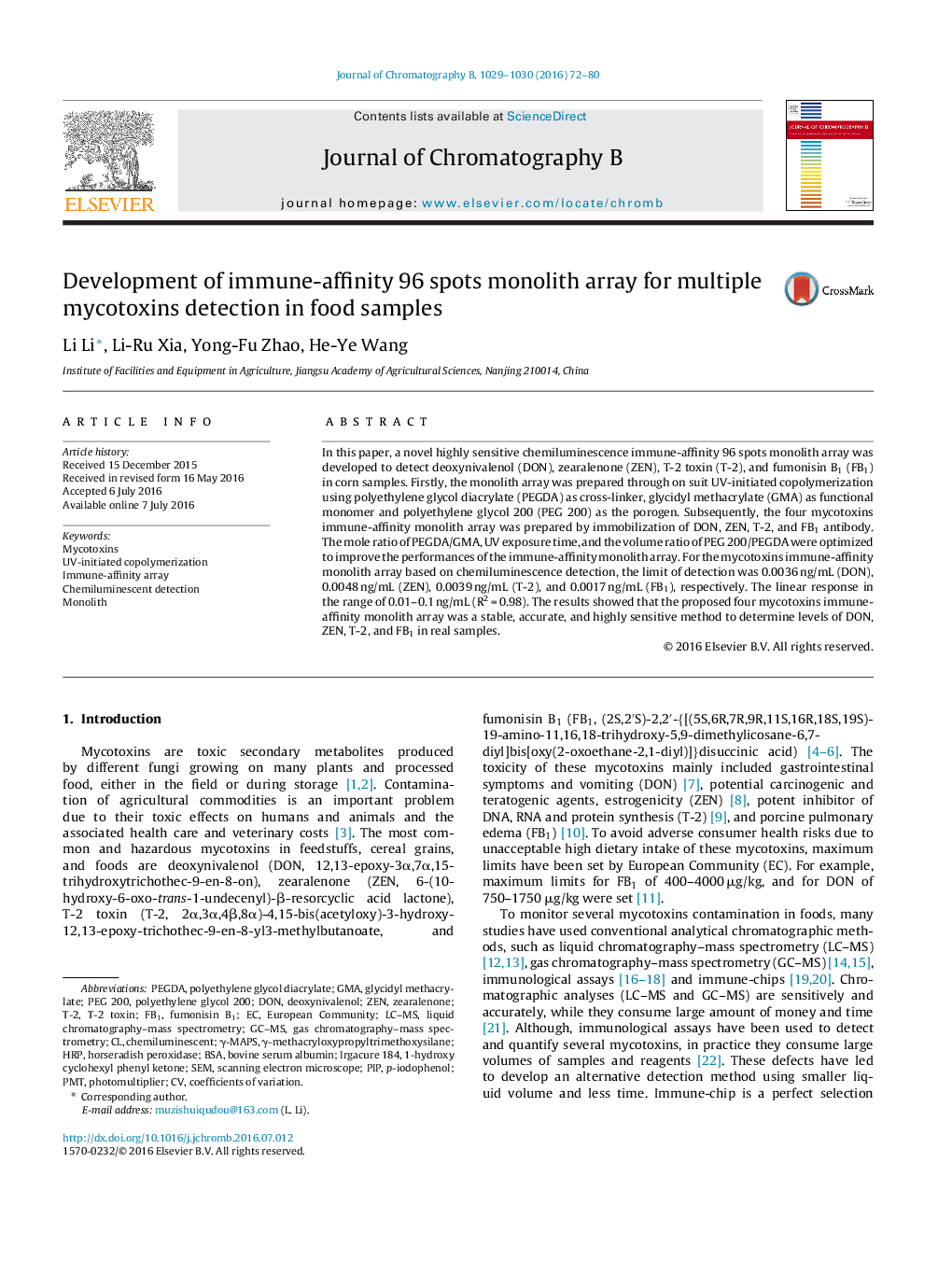| Article ID | Journal | Published Year | Pages | File Type |
|---|---|---|---|---|
| 1211808 | Journal of Chromatography B | 2016 | 9 Pages |
•A sensitive multiplex mycotoxins immune-affinity 96 spots monolith array was fabricated for detecting DON, ZEN, T-2, and FB1.•The mycotoxins immune-affinity arrays feature with well-distributed porous structure, good uniformity, and low detection limit.•The four mycotoxins immune-affinity monolith array more sensitive than corresponded ELISA Kits.
In this paper, a novel highly sensitive chemiluminescence immune-affinity 96 spots monolith array was developed to detect deoxynivalenol (DON), zearalenone (ZEN), T-2 toxin (T-2), and fumonisin B1 (FB1) in corn samples. Firstly, the monolith array was prepared through on suit UV-initiated copolymerization using polyethylene glycol diacrylate (PEGDA) as cross-linker, glycidyl methacrylate (GMA) as functional monomer and polyethylene glycol 200 (PEG 200) as the porogen. Subsequently, the four mycotoxins immune-affinity monolith array was prepared by immobilization of DON, ZEN, T-2, and FB1 antibody. The mole ratio of PEGDA/GMA, UV exposure time, and the volume ratio of PEG 200/PEGDA were optimized to improve the performances of the immune-affinity monolith array. For the mycotoxins immune-affinity monolith array based on chemiluminescence detection, the limit of detection was 0.0036 ng/mL (DON), 0.0048 ng/mL (ZEN), 0.0039 ng/mL (T-2), and 0.0017 ng/mL (FB1), respectively. The linear response in the range of 0.01–0.1 ng/mL (R2 = 0.98). The results showed that the proposed four mycotoxins immune-affinity monolith array was a stable, accurate, and highly sensitive method to determine levels of DON, ZEN, T-2, and FB1 in real samples.
